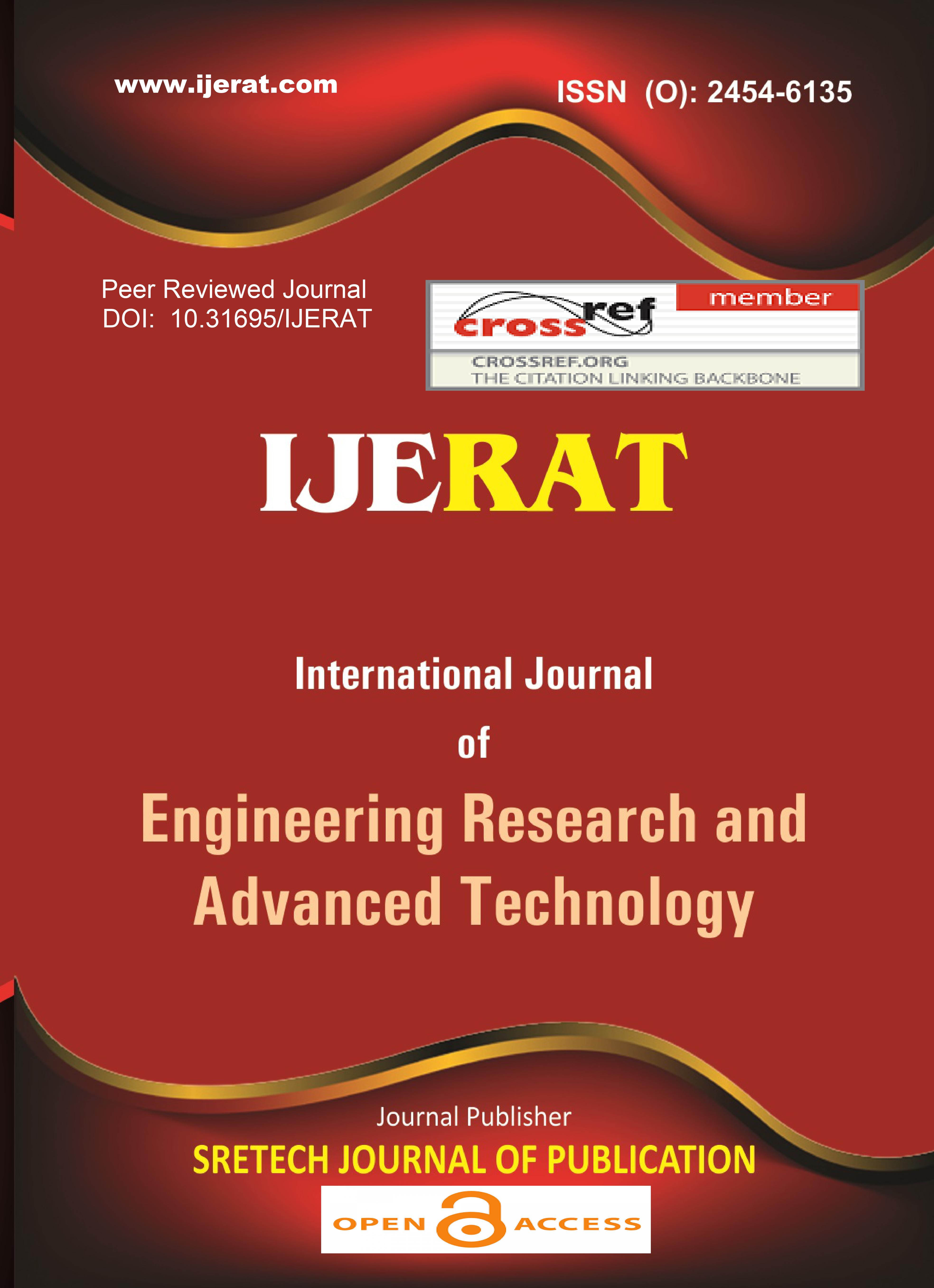Rock Landslides Induced by Earthquakes: A Study on Influence of Strength Criterion on Limit Equilibrium Stability Analysis
DOI:
https://doi.org/10.31695/IJERAT.2021.3744Keywords:
Rock Landslide, Slope stability Analysis, Earthquake, Limit Equilibrium Methods, Mohr–CoulombAbstract
The stability analysis of landslides is important because they are major geological hazards in many parts of the world. In this paper, the most common and traditional methods for the analysis of slope stability — i.e., Limit Equilibrium Methods — are used to investigate the influence of using different strength criteria on stability analysis of rock landslides subjected to a seismic load. For this purpose, four different Limit Equilibrium Methods including (1) Bishop, (2) Janbu, (3) Spencer, and (4) Morgenstern-Price are used by incorporating Mohr-Coulomb and Generalized Hoek-Brown strength criteria to model slopes with different properties and rock types — (1) Siltstone, (2) Limestone, (3) Sandstone, and (4) Granite. This study shows that when Generalized Hoek-Brown criterion is used for slope stability analysis, the relative difference of both the predicted minimum factors of safety and areas of potential failure surface — with respect to the cases with Mohr-Coulomb criterion — increases as the strength of rock mass increases. Also, when Generalized Hoek-Brown criterion is used, lower values for both the minimum factor of safety and area of potential failure surface — compared to the cases with Mohr-Coulomb criterion — are predicted for weak rock masses. However, for rock masses with high strength, higher values for both the minimum factor of safety and area of potential failure surface are obtained when Generalized Hoek-Brown criterion is used. The findings of this study can help geotechnical, civil, and mining engineers select the appropriate rock strength criterion for slope stability analysis and design of slope stabilization measures, and to predict landslides.
References
Bozzano, F., Martino, S., Montagna, A., Prestininzi, A. (2012). Back analysis of a rock landslide to infer rheological parameters. Eng. Geol. 131, 45–56.
Tebbens, S.F. (2020). Landslide scaling: A review. Earth And Space Science, 7(1), 1-12.
Gatter, R., Cavalli, M., Crema, S., Bossi, G. (2018). Modeling the dynamics of a large rock landslide in the Dolomites (eastern Italian Alps) using multi-temporal DEMs. PeerJ, 6, e5903.
Antolini, F., Barla, M. (2015). Combining Finite-Discrete Numerical Modelling and Radar Interferometry for Rock Landslide Early Warning Systems. Engineering Geology for Society and Territory, 6, 705– 708.
Bishop A. W. (1955). The use of the slip circle in the stability analysis of earth slopes. Géotechnique, 5(1), 7−17.
Spencer E. (1967). A method of analysis of the stability of embankments assuming parallel inter-slice forces. Geotechnique, 17(1), 11−26.
Morgenstern-Price V. E. (1965). The analysis of the stability of general slip surfaces. Geotechnique, 15(1), 79−93.
Li A. J., Lyamin A. V., Merifield R. S. (2009). Seismic rock slope stability charts based on limit analysis methods. Computers and Geotechnics, 36(1), 135−148.
Zhao L. H., Li L., Yang F., Luo Q., Liu X. (2010). Upper bound analysis of slope stability with nonlinear failure criterion based on strength reduction technique. Journal of Central South University of Technology, 17(4), 836−844.
Yang X. G., Chi S. C. (2013). Upper bound finite element analysis of slope stability using a nonlinear failure criterion. Computers and Geotechnics, 54(10), 185−191.
LI L. C., Tang C. A., Zhu W. C., Liang Z. Z. (2009). Numerical analysis of slope stability based on the gravity increase method. Computers and Geotechnics, 36(7), 1246−1258.
Mehdipoura I., Ghazavib M., Moayed R. Z. (2013). Numerical study on stability analysis of geocell reinforced slopes by considering the bending effect. Geotextiles and Geomembranes, 37(4): 23−24.
Hao F. and Wang L. (2016). Application Study of FLAC in Analysis of Slope Stability. Physical and Numerical Simulation of Geotechnical Engineering, 23, 17–23.
Beyabanaki, S.A.R. (2020). A Comparison Between Using Finite Difference and Limit Equilibrium Methods for Landslide Analysis of Slopes Containing a Weak Layer. American Journal of Engineering Research (AJER), 9(12), 68–79.
Pradhan, S. P. and Siddique, T. (2020). Stability assessment of landslide-prone road cut rock slopes in Himalayan terrain: A finite element method based approach. J. Rock Mech. Geotech. Eng., 12, 59–73.
Beyabanaki, S.A.R., Bagtzoglou A.C., & Liu, L. (2016). Applying disk based discontinuous deformation analysis (DDA) to simulate Donghekou landslide triggered by the Wenchuan earthquake. Geomechanics and Geoengineering, 11(3), 177–188.
Beyabanaki, S.A.R. (2019). Applications of Three-Dimensional Discontinuous Deformation Analysis: A Review. American Journal of Engineering Research (AJER), 8(10), 237–245.
Dong, M., Li, Y. & Li Y. (2018). Analysis of development process of landslide accumulation body based on discrete element method. Earth and Environmental Science, 170, 1–9.
Vinay K., Burman A., Himanshu N., Gordan B. (2021). Rock Slope Stability Charts Based on Limit Equilibrium Method Incorporating Generalized Hoek-Brown Strength Criterion for Static and Seismic Conditions. Environmental Earth Sciences, 80(212), 1-20.
Beyabanaki, S.A.R., Bagtzoglou A.C., Anagnostou E.N. (2016). Effects of groundwater table position, soil strength properties and rainfall on instability of earthquake-triggered landslides. Environ Earth Sciences, 75, 1–13.
Huang, Y.H. (2014). Slope Stability Analysis by the Limit Equilibrium Method: Fundamentals and Methods. ASCE Press, pp 1-376. ISBN: 978-0784412886.
Sarkar S., Pain A., Samanta M., Kanungo D.P. (2015). Hill Slope Stability Based on Generalized Hoek-Brown Criterion–A Case Study from Sikkim Himalaya. Int. Conf. on Engineering Geology in New Millennium, Delhi, India, October 2015, pp 1274- 1281.
Deng D., Zhao L., Li L. (2017). Limit equilibrium analysis for rock slope stability using basic Hoek–Brown strength criterion. J Cent South Univ, 24, 2154–2163.
Kumar, V., Himanshu, N. Burman, A. (2019). Rock slope analysis with nonlinear Hoek–Brown criterion incorporating equivalent Mohr–Coulomb parameters. Geotechnical and Geological Engineering, 37, 4741–4757.
Kang, K., Fomenko, I.K., Wang, J. and Nikolskaya, O.V. (2020). Probabilistic Assessment of Rock Slope Stability in Open Pit Mine Chaarat Using the Generalized Hoek-Brown Criterion. Journal of Mining Science, 56(5), 732-740.
Michalowski R. L., Park D. (2020). Stability assessment of slopes in rock governed by the Hoek-Brown strength criterion. International Journal of Rock Mechanics and Mining Sciences, 127, 104217.
Wei, Y., Liyan, W., Xing, Z., Hanhua, T., Shu, P., Yanyu, X., Wei, W., Xiaoyun, S. Jiandong, N. (2021). A rapid stability charts analysis method for rock slopes based on Generalized Hoek-Brown criterion. All Earth, 33(1), 98-107.
Kang, K., Zerkal, O.V., Ponomarev, A.A. and Fomenko, I.K. (2021). Probabilistic Slope Stability Assessment Under Seismic Conditions Based on the Generalized Hoek-Brown Criterion. Soil Mechanics and Foundation Engineering, 58(3), 223-229.
Kumar, V., Burman, A., Himanshu, N. and Gordan, B. (2021). Rock slope stability charts based on limit equilibrium method incorporating Generalized Hoek-Brown strength criterion for static and seismic conditions. Environmental Earth Sciences, 80(6), 1-20.
Beyabanaki, S.A.R. (2021). LEM Stability Analysis of Landslides Induced by Earthquakes: Impact of a Weak Layer. American Journal of Engineering Research (AJER), 10(05), 257-268.
Deng, D.P., Li, L., Zhao, L.H. (2017). Limit equilibrium method (LEM) of slope stability and calculation of comprehensive factor of safety with double strength-reduction technique. Journal of Mountain Science, 14(11), 2311-2324.
Hoek, E. (1983). Strength of jointed rock masses. Geotechnique, 33(3), 187-223.
Rocscience Inc. (2017). RocData Version 5.0 – rock strength data analysis, Toronto, Ontario, Canada.
Rocscience Inc, (2020). SLIDE Version 9.008 – 2D limit equilibrium analysis of slope stability, Toronto, Canada.
Downloads
Published
Issue
Section
License
Copyright (c) 2021 S. Amir Reza Beyabanaki

This work is licensed under a Creative Commons Attribution-NonCommercial 4.0 International License.









